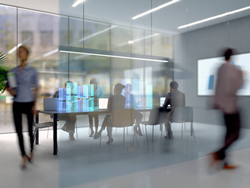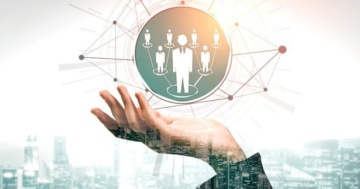Lucia Darino, Umar Husain, Phil Kirschner and Rob Palter* say business leaders now face a once-in-a-century opportunity to completely reinvent the workplace.
 When COVID-19 prompted abrupt, large-scale remote working, the shift launched a global debate about the purpose of the office.
When COVID-19 prompted abrupt, large-scale remote working, the shift launched a global debate about the purpose of the office.
With the rise of new ways and places to work, business leaders now face a once-in-a-century opportunity to completely reinvent the workplace—and increase productivity as a result.
Leaders in the life sciences industry have long experimented with workplace design to promote innovation and collaboration and to accelerate novel drug and therapy development.
Their experience offers four keys to success, for leaders in any field, to improve performance by reimagining the future of work:
- Align workplace design to organisational purpose, mission, and strategy.
Organisations should consider their specific overall purpose and mission for guidance in rethinking their future workplaces.
For example, while much work can be accomplished from many locations, high-speed research and development (R&D) processes may require co-location for specific steps and activities.
For instance, in alignment with its purpose to “help people do more, feel better, live longer,” GSK consolidated its R&D operations and reimagined its facilities with reconfigurable “smart lab” equipment.
The goal of this shift was to increase collaboration and bring new therapies to patients faster—tying its efforts to broader purpose and mission.
- Create physical and virtual environments that reflect your future workplace strategy.
Many businesses are learning that, with the right support, employees can work as effectively from their home or a “third place” as they can from the office.
As organisations evolve their strategy for the future of the workplace, they should consider these changing dynamics and address them in a way that is consistent with their larger message and approach.
Consistent with its “Choice with Responsibility” policy, Novartis relocated its Canadian headquarters to WeWork to improve the employee experience.
This decision was intentionally marketed to top talent as an element of its employee value proposition.
- Design workplaces in a customer-centric way.
Organisations should create a workplace ecosystem that offers proximity to partners, customers, and the optimal workforce—all with the consumer in mind.
This might mean using shorter-term leases and flexible solutions to create a responsive real estate portfolio.
At one life sciences innovation hub, mid-cap biotechs, digital health start-ups, and entrepreneurs share wet lab space, equipment, prototype studios, and collision rooms and tap into the expertise and experience of ecosystem partners.
This dynamic creates a workplace that functions as an incubator and advances the research pipeline.
- Test and learn as working patterns evolve rapidly into the next normal.
Leaders can consider modular and agile workplace solutions to adapt to evolving team needs in days—not months or years.
Advanced analytics, employee experience applications, and spatial utilization techniques also help organisations respond to changes in workflow, productivity, employee connection, and engagement.
Merck, Pfizer, and J&J leverage activity-based design and occupancy strategies, relying on advanced analytics and data science to quantify the needs of different teams—dynamically right-sizing lab and office spaces.
In one final example, in 2021, McKinsey partnered with a leading biotech to develop a future of workplace strategy informed by design thinking and “collision workshops.”
As a result, the organisation designed a network of satellite offices, labs, and incubators around its traditional headquarters.
The company defined use cases for plug-and-play and adaptable workspaces, as well as integrated digital environments.
This set-up has created an equitable experience for all employees with the ability to connect both in person and virtually.
By revaluating its need for physical space while reducing attrition through improved employee experience, the company now makes better-informed decisions about real estate.
Business leaders in every sector have an opportunity to strategically reshape the workplace by aligning it to the organisation’s purpose, expressing the workforce strategy, locating and designing spaces that ensure customer centricity, and using analytics to respond in real time.
Ultimately, the key to unlocking incredible value is making the workplace work harder for the business and its employees.
*Lucia Darino partners with organisations to transform their workforce to harness the full potential of innovation in their industry. Umar Husain is a contributor at McKinsey & Company. Phil Kirschner advises executive leadership teams on future, post-pandemic workplace strategies. Rob Palter specialises in helping clients identify real estate investment opportunities and strategically manage real estate assets
This article first appeared at mckinsey.com.











